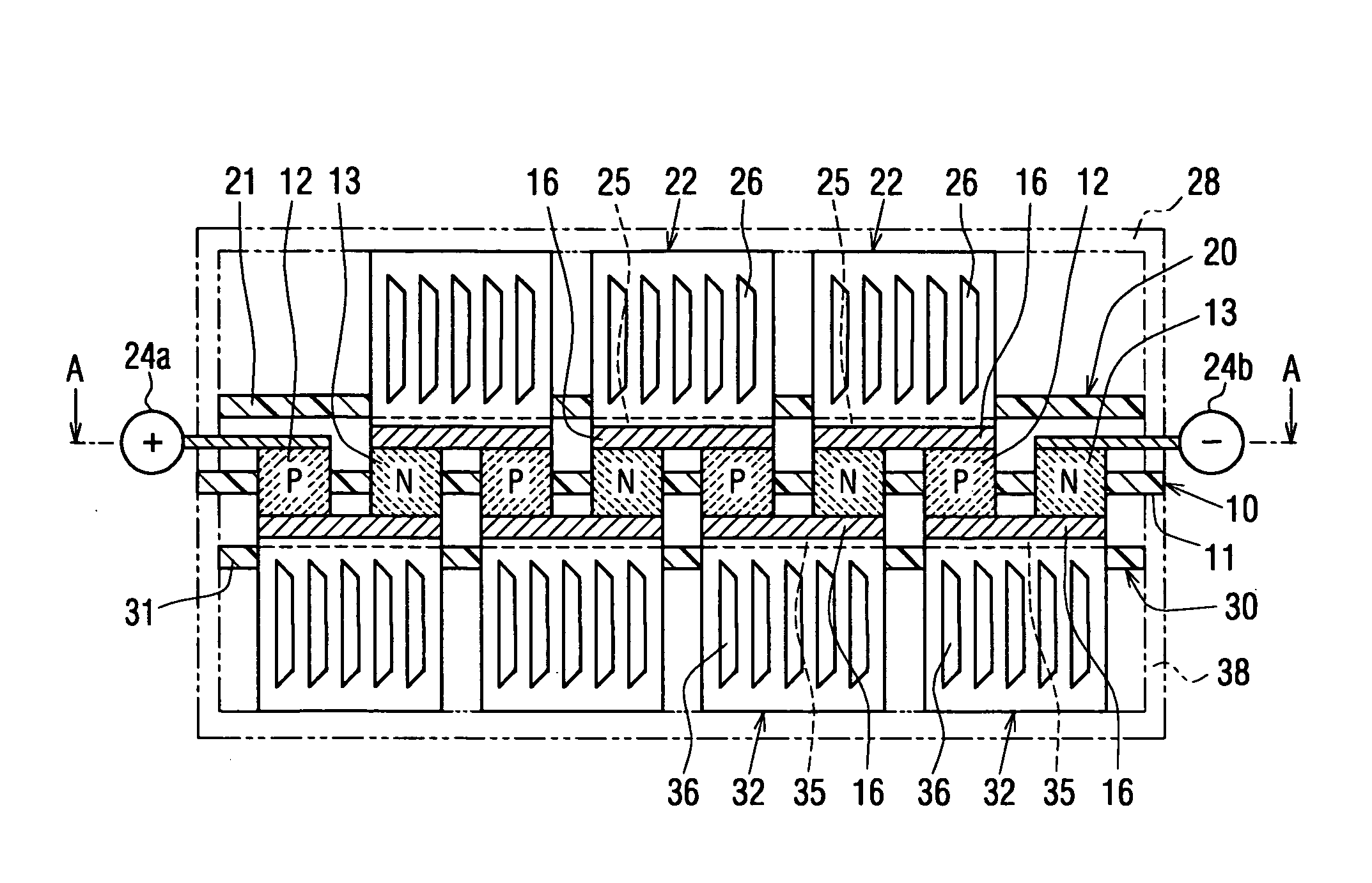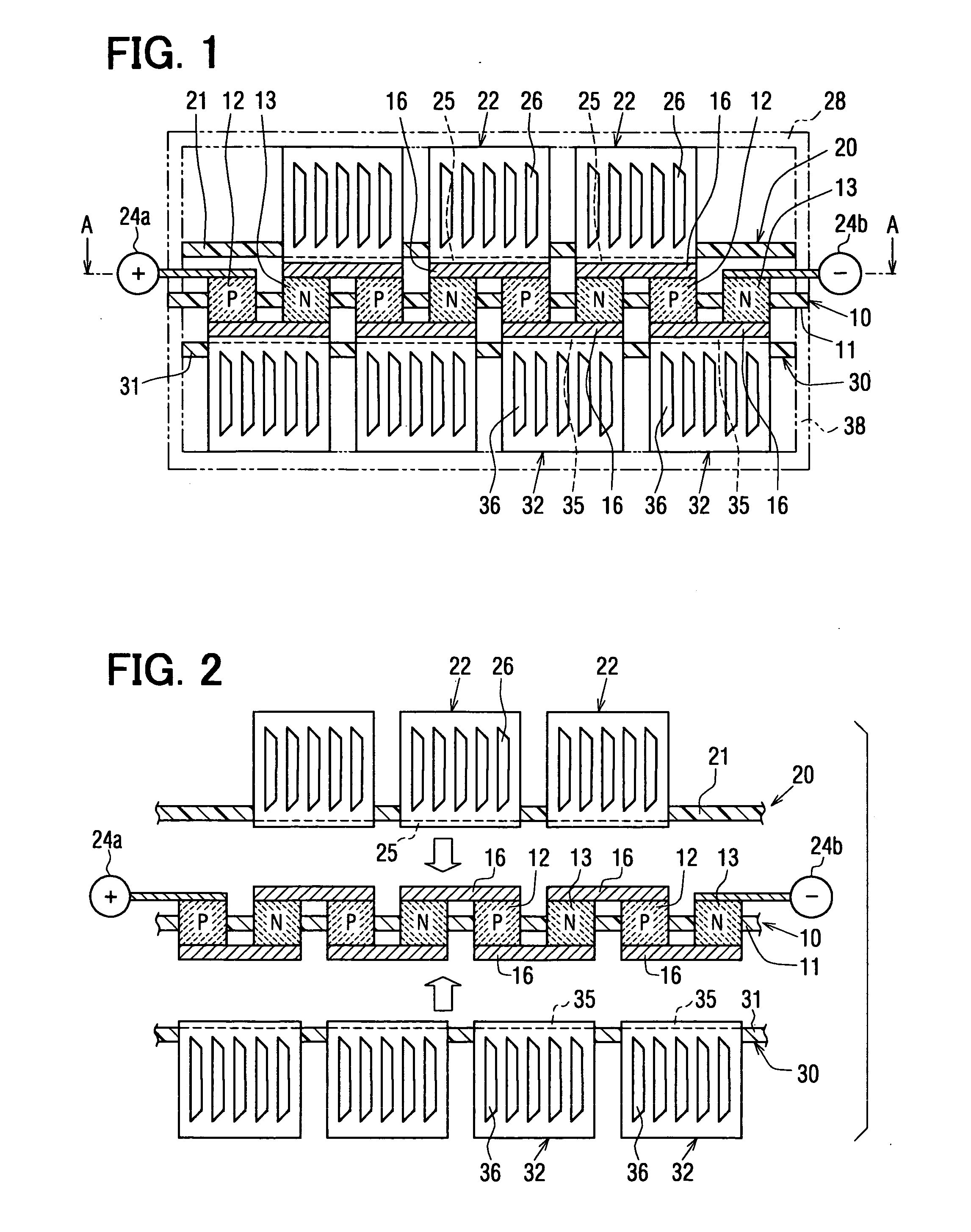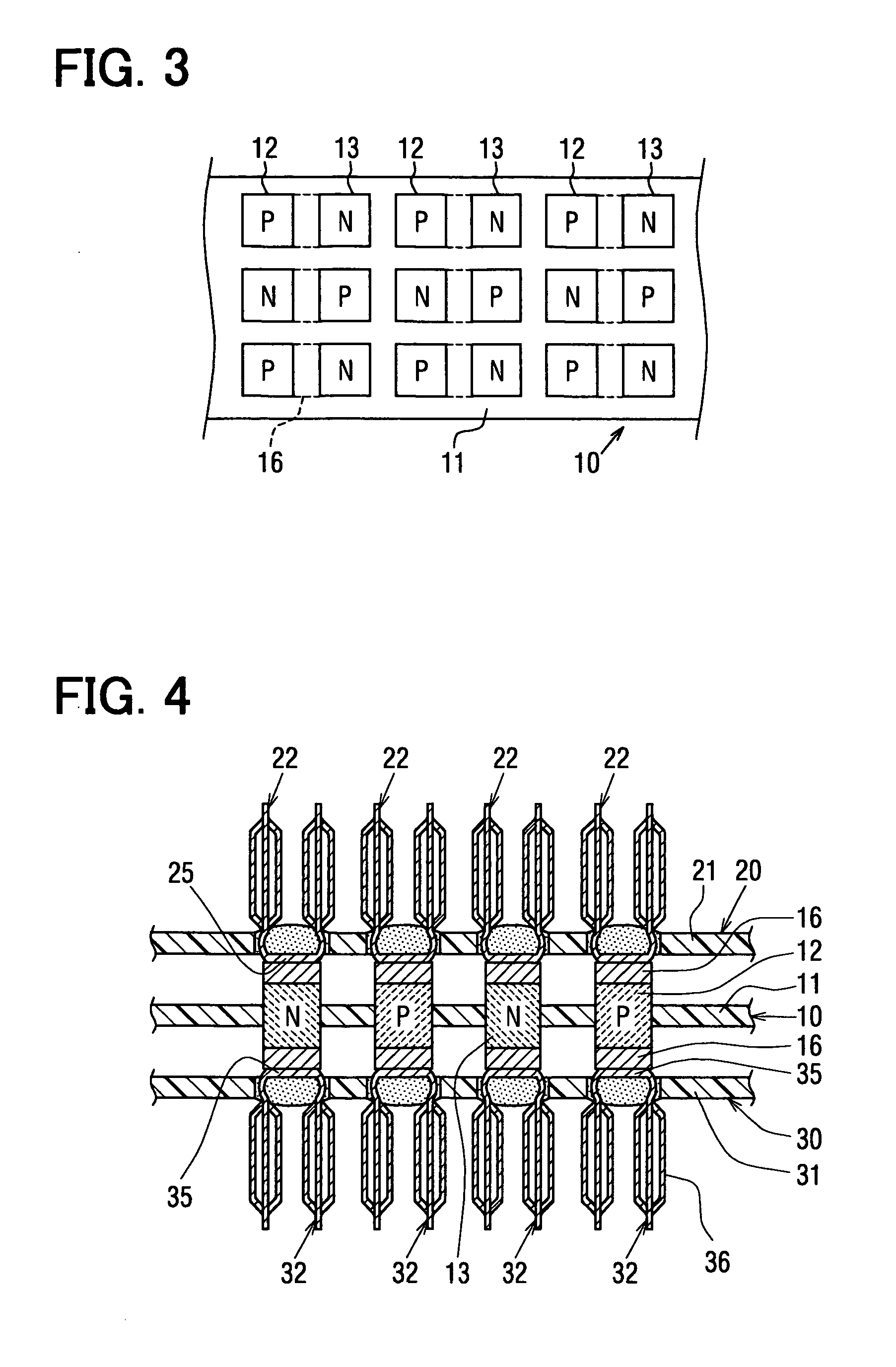Thermoelectric Converter
a converter and thermoelectric technology, applied in the direction of generator/motor, lighting and heating apparatus, semiconductor/solid-state device details, etc., can solve the problems of difficult to offer the required electric insulation, large apparatus size, and difficult to improve productivity, so as to reduce manufacturing costs, reduce manufacturing costs, and accurate shape
- Summary
- Abstract
- Description
- Claims
- Application Information
AI Technical Summary
Benefits of technology
Problems solved by technology
Method used
Image
Examples
tenth embodiment
[0279]FIG. 17 and FIG. 18 illustrate a tenth embodiment according to the present invention. In this embodiment, the P-type thermoelectric elements 12 and the N-type thermoelectric elements 13 are pre-placed on either the heat-absorbing electrodes 25 or the heat-dissipating electrodes 35 to form a plurality of units, and the plurality of the units are arranged to form a thermoelectric converter.
[0280] The heat-absorbing electrode substrate 20 has the first heat-absorbing electrode members 22. Each of the first heat-absorbing electrode members 22 has a flat-plate-shaped heat-absorbing electrode 25 and a heat-absorbing heat-exchange member 22a which is thermally connected to the heat-absorbing electrode 25 for heat exchange with air. The heat-absorbing electrode 25 is fixed to one face of a second insulating substrate 21. The heat-absorbing heat-exchange member 22a is shaped in bracket form. Two arms of the heat-absorbing heat-exchange member 22a extend through the second insulating s...
eleventh embodiment
[0287]FIG. 19 illustrates an eleventh embodiment. In this embodiment, the first heat-absorbing electrode members 22 and the first heat-dissipating electrode members 32 are fitted to the thermoelectric element substrate 10.
[0288] Convex portions 11a, 11b are formed as protrusions from the two faces of the first insulating substrate 11 between the P-type thermoelectric element 12 and the N-type thermoelectric element 13 which are adjacent to each other. Receiving portions 25b, 35b into which the convex portions 11b are fitted are formed in the heat-absorbing electrode 25 and the heat-dissipating electrode 35. The fitting portions 25b, 35b are fitted over the convex portions 11b. The thermoelectric element substrate 10 is situated so as to be sandwiched between the first heat-absorbing electrode members 22 and the first heat-dissipating electrode members 32. It should be noted that the convex portion 11a is a convex portion electrically insulating the first heat-absorbing electrode me...
twelfth embodiment
[0290]FIG. 20 to FIG. 22 illustrate a twelfth embodiment according to the present invention. In this embodiment, the first heat-absorbing electrode member 22 is provided by coupling a plurality of members together. A similar structure is used for the first heat-dissipating electrode member 32. The structure of this embodiment may be used for either the first heat-absorbing electrode member 22 or the first heat-dissipating electrode member 32. The first heat-absorbing electrode member 22 will be described below and the corresponding parts of the first heat-dissipating electrode member 32 are indicated by parenthetical reference numerals.
[0291] The first heat-absorbing electrode member 22 (32) is formed by joining two second heat-absorbing electrode members 221 (321) and a third heat-absorbing electrode member 222 (322) together. The second heat-absorbing electrode members 221 (321) and the third heat-absorbing electrode member 222 (322) differ from each other in the length of a heat...
PUM
 Login to View More
Login to View More Abstract
Description
Claims
Application Information
 Login to View More
Login to View More - R&D
- Intellectual Property
- Life Sciences
- Materials
- Tech Scout
- Unparalleled Data Quality
- Higher Quality Content
- 60% Fewer Hallucinations
Browse by: Latest US Patents, China's latest patents, Technical Efficacy Thesaurus, Application Domain, Technology Topic, Popular Technical Reports.
© 2025 PatSnap. All rights reserved.Legal|Privacy policy|Modern Slavery Act Transparency Statement|Sitemap|About US| Contact US: help@patsnap.com



